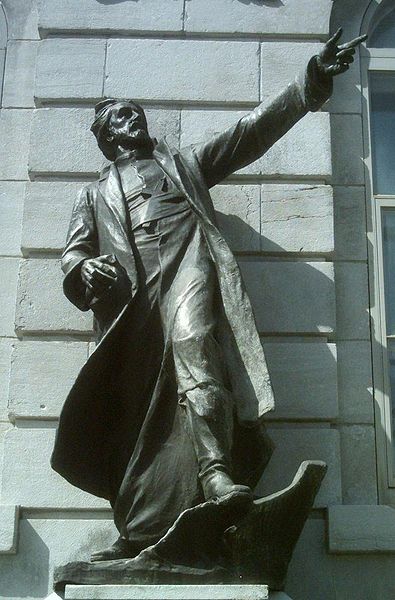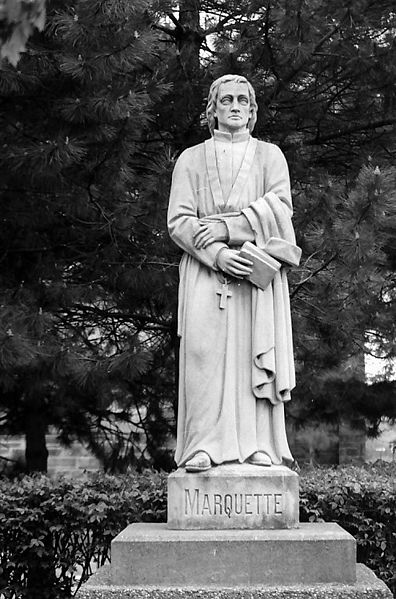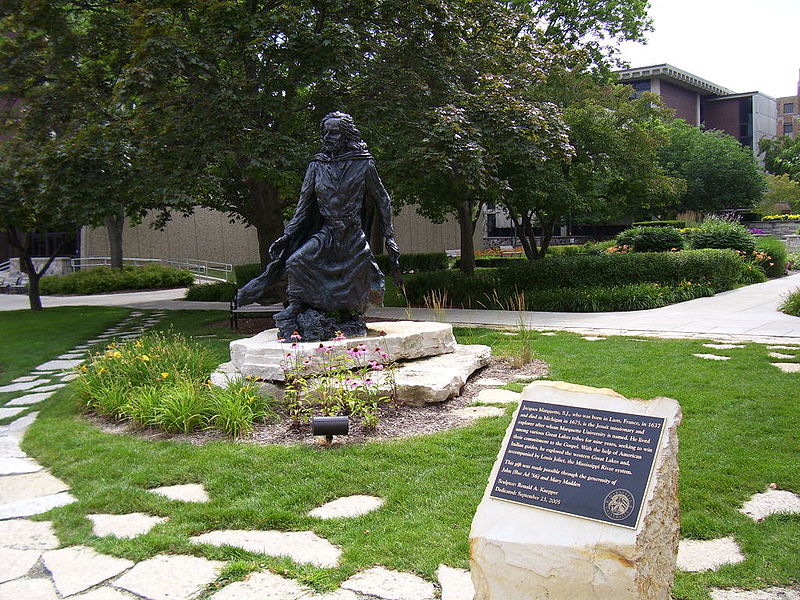<Back to Index>
- Hydraulics Engineer Henry Philibert Gaspard Darcy, 1803
- Bluesman Chester Arthur Burnett (Howlin' Wolf), 1910
- Founder of Sault Ste. Marie, MI Father Jacques Marquette, 1637
PAGE SPONSOR
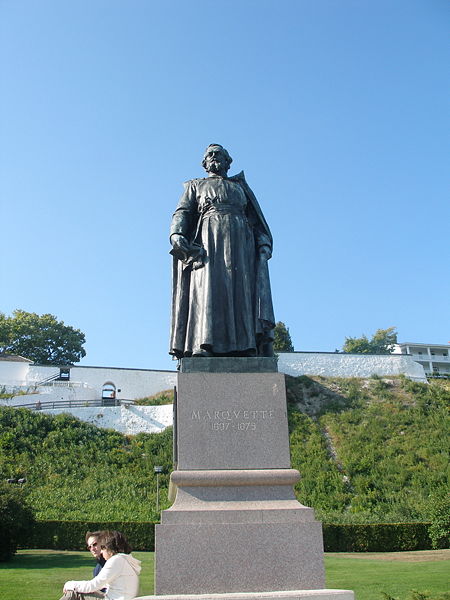
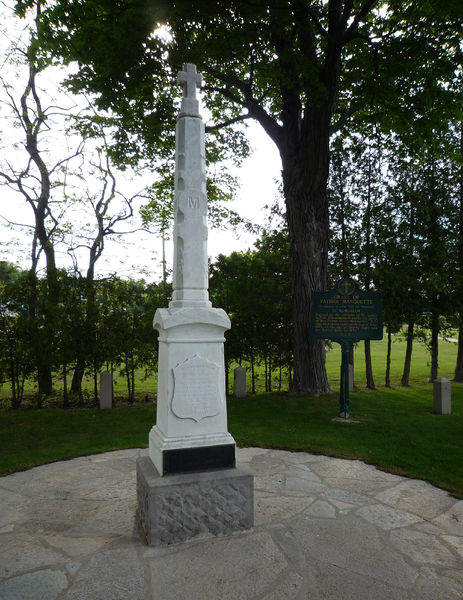
Father Jacques Marquette S.J. (June 10, 1637 – May 18, 1675), sometimes known as Père Marquette, was a French Jesuit missionary who founded Michigan's first European settlement, Sault Ste. Marie, and later founded St. Ignace, Michigan. In 1673 Father Marquette and Louis Jolliet were the first Europeans to see and map the northern portion of the Mississippi River.
Jacques Marquette was born in Laon, France, on June 10, 1637 and joined the Society of Jesus at age seventeen. After he worked and taught in France for several years, the Jesuits assigned him to Quebec in 1666 as a missionary to the Indigenous peoples of the Americas. He showed great proficiency in learning the local languages, especially Huron. In 1668 Father Marquette was redeployed by his superiors to missions farther up the St. Lawrence River in the western Great Lakes region. He helped found a mission at Sault Ste. Marie, Michigan in present-day Michigan; and at La Pointe, on Lake Superior near the present-day city of Ashland, Wisconsin. Here he encountered members of the Illinois tribes, who told him about the important route of the Mississippi River. They invited him to teach their people, whose settlements were mostly further south. Because of wars between the Hurons at La Pointe and the neighboring Lakota people, Father Marquette left the mission and went to the Straits of Mackinac; he informed his superiors about the rumored river and requested permission to explore it.
Leave was granted, and in 1673, Marquette was joined by Louis Jolliet, a French-Canadian explorer. They departed from St. Ignace on May 17, with two canoes and five voyageurs of French-Indian ancestry (now recognized as the ethnic group Métis). They followed Lake Michigan to the Bay of Green Bay and up the Fox River, nearly to its headwaters. From there, they were told to portage their canoes a distance of slightly less than two miles through marsh and oak plains to the Wisconsin River. At that point the French later built the trading town of Portage, named for its location. From the portage, they ventured forth, and on June 17, they entered the Mississippi near present-day Prairie du Chien, Wisconsin. The Jolliet-Marquette expedition traveled to within 435 miles (700 km) of the Gulf of Mexico but turned back at the mouth of the Arkansas River. By this point they had encountered several natives carrying European trinkets, and they feared an encounter with explorers or colonists from Spain. They followed the Mississippi back to the mouth of the Illinois River, which they learned from local natives provided a shorter route back to the Great Lakes. They reached Lake Michigan near the site of modern-day Chicago. In September Marquette stopped at the mission of St. Francis Xavier, located in present-day Green Bay, Wisconsin, while Jolliet returned to Quebec to relate the news of their discoveries.
Marquette and his party returned to the Illinois Territory in late 1674, becoming the first Europeans to winter in what would become the city of Chicago. As welcomed guests of the Illinois Confederation, the explorers were feasted en route and fed ceremonial foods such as sagamite.
In the spring of 1675, Marquette traveled westward and celebrated a public mass at the Grand Village of the Illinois near Starved Rock. A bout of dysentery which he had contracted during the Mississippi expedition sapped his health. On the return trip to St. Ignace, he died at age 38 near the modern town of Ludington, Michigan. A Michigan Historical Marker at this location reads:
| “ | "Father Jacques Marquette, the great Jesuit missionary and explorer, died and was buried by two French companions somewhere along the Lake Michigan shore on May 18, 1675. He had been returning to his mission at St. Ignace which he had left in 1673 to go exploring in the Mississippi country. The exact location of his death has long been a subject of controversy. A spot close to the southeast slope of this hill, near the ancient outlet of the Pere Marquette River, corresponds with the death site as located by early French accounts and maps and a constant tradition of the past. Marquette's remains were reburied at St. Ignace in 1677." | ” |
